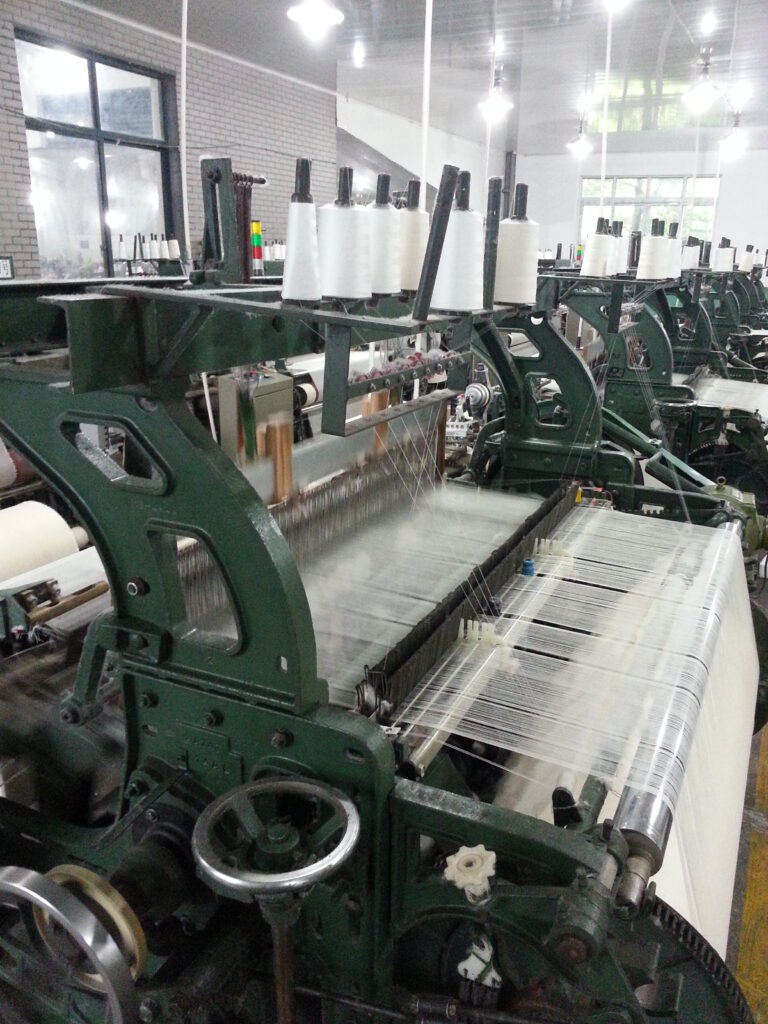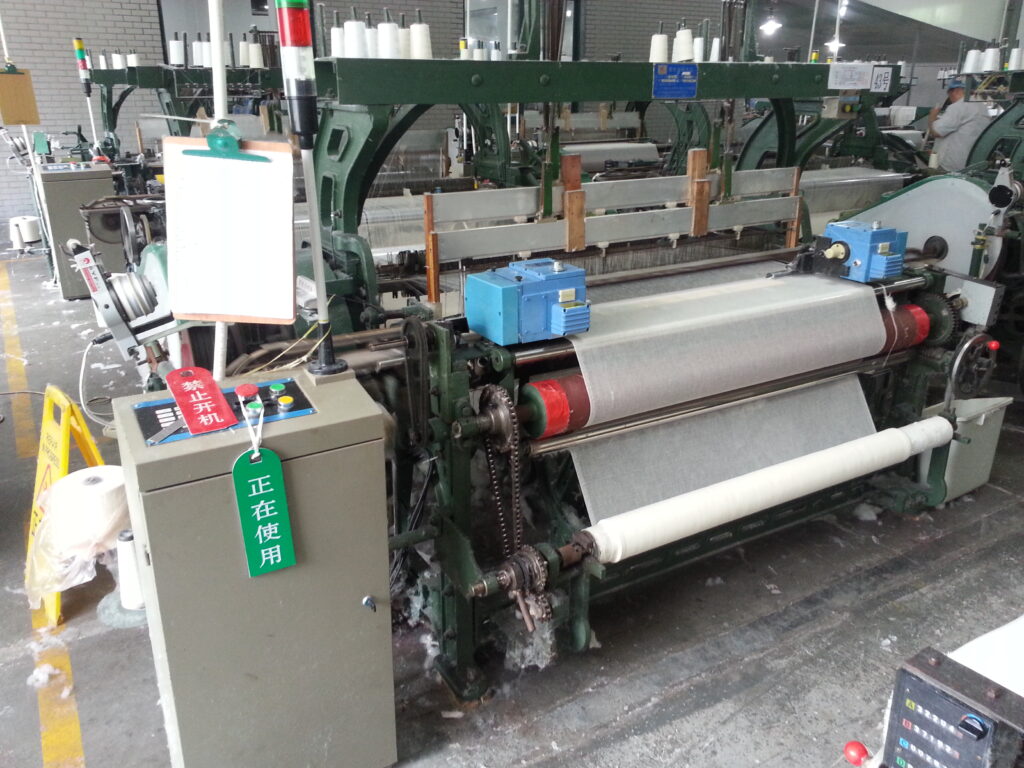When it comes to purchasing hotel linen, price is often the primary consideration for most hotels as it directly affects operational costs. However, bed linen prices fluctuate due to various factors, such as raw material cotton yarn, manufacturing processes, and fabric types. Today, let’s talk about jet fabric and rapier fabric.
The rapier loom is known for its convenient color change feature and is suitable for producing multi-color weft fabrics. It is used for the production of color-woven fabrics, double-layered pile fabrics, terry fabrics, and decorative fabrics.
The jet loom’s biggest advantage is its high speed and productivity, making it suitable for producing plain weaves, textured fabrics, fine and high-density fabrics, and large quantities of fabric.
(1) Jet looms generally produce finer yarn varieties with a higher range of fabric types, mainly lightweight fabrics. Rapier looms, on the other hand, produce coarser yarn varieties with a lower range of fabric types, mainly heavy fabrics.
(2) From an equipment perspective, the main difference between jet and rapier looms lies in their weft insertion methods.
(3) When weaving fabrics with the same structure and the same raw material costs, jet looms have lower weaving costs. For example, in twill weave, the jet loom can reach a maximum speed of over 800 RPM, while the rapier loom operates at around 180-200 RPM. A jet loom operator can handle 10-12 machines, whereas a rapier loom operator can handle a maximum of 4-6 machines.
So how can we differentiate between jet fabric and rapier fabric? Generally, if the fabric surface shows a higher number of defects such as floating threads, weft distortion, warp floats, or spider webs, it can be determined that it is rapier fabric. Jet fabric has the advantage of having fewer defects and fewer missing or skipped threads.
Finally, Ulencn.com would like to remind all hotel linen buyers that a good hotel should provide guests with a comfortable sleep in exchange for their money. Skin-friendly hotel linen not only enhances guests’ sleep quality but also improves the hotel’s customer retention rate!